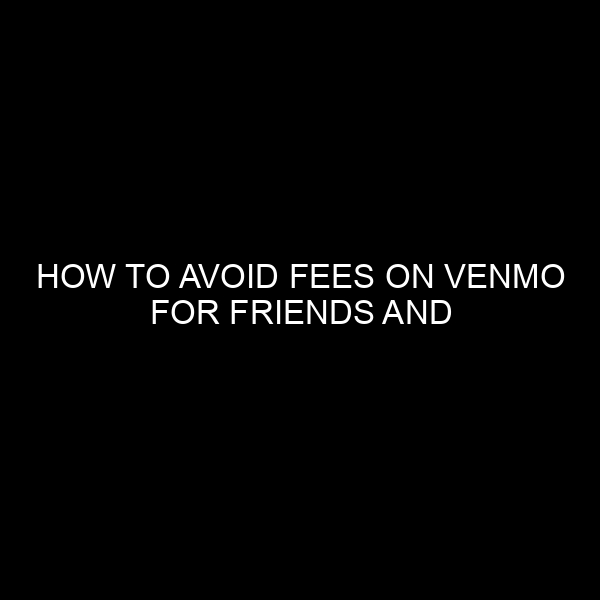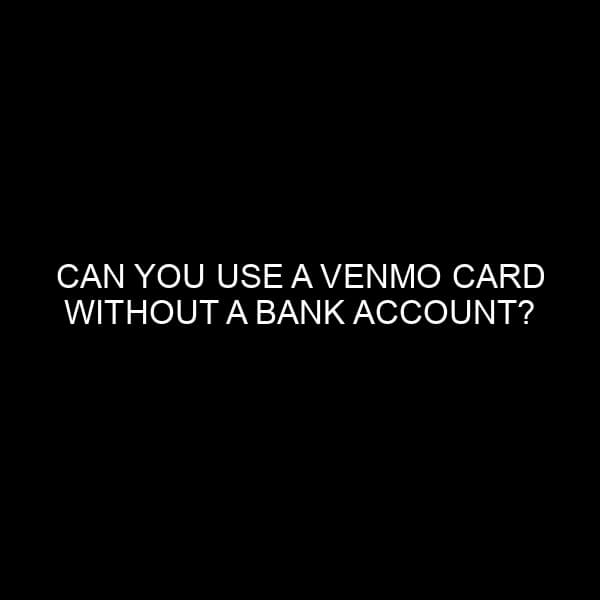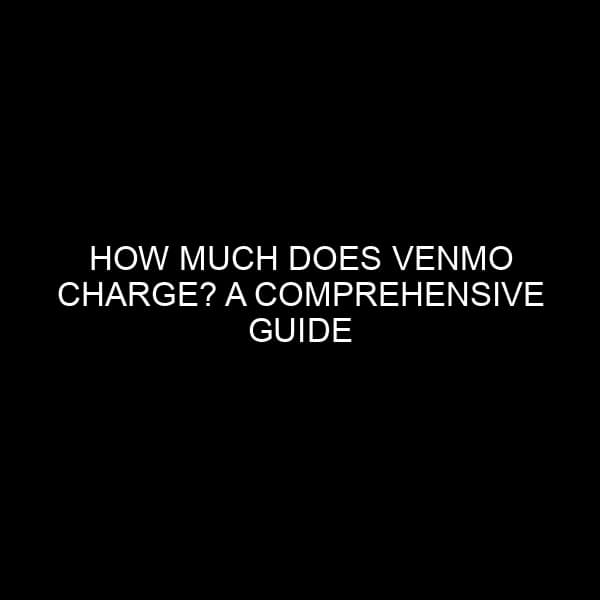How Much Does Venmo Charge? An In-Depth Examination
In today’s digital age, financial transactions have evolved beyond traditional banking and into the realm of mobile payment platforms. Venmo, owned by PayPal, is one of the frontrunners in this space, making it possible for individuals to send and receive money with a few simple taps on their smartphones. But how does this convenient service impact your wallet directly? Today, we’ll explore the various fees associated with using Venmo.
Understanding the Venmo Platform
Before diving into the numbers, it’s crucial to understand what Venmo is and how it works. Launched in 2009, Venmo was initially designed to help friends split bills. Today, it’s a full-fledged payment platform utilized by millions. Users can link their bank accounts, credit cards, or debit cards to send and receive money.
1. Person-to-Person Payments
For the majority of users, Venmo is primarily known as a peer-to-peer payment system. Here’s a look at the costs associated with these types of transactions:
- Bank Account or Venmo Balance Transfers: Sending money from your bank account or your Venmo balance to someone else on the platform is free. Similarly, receiving money on Venmo and keeping it in your Venmo balance incurs no charge.
- Credit Card Transfers: If you’re sending money through Venmo using a credit card, there’s a 3% fee. This fee is in place because credit card companies charge Venmo for these transactions. However, receiving money on Venmo, even if the sender used a credit card, is still free for the recipient.
2. Venmo Debit Card Transactions
Venmo offers its Mastercard-branded debit card, allowing users to spend their Venmo balance at various merchants.
- Purchases: Making purchases with the Venmo debit card does not attract any fees.
- ATM Withdrawals: If you’re using the card to withdraw cash from an ATM, it’s free at MoneyPass ATMs. However, for non-MoneyPass ATMs, there’s a $2.50 fee. Do note that the ATM operator might also impose additional fees.
3. Instant Transfer Fees
Venmo provides the option to instantly transfer your Venmo balance to a linked bank account or eligible debit card.
- Instant Transfers: For this expedited service, Venmo charges a fee of 1% of the transfer amount (a minimum fee of $0.25 and a maximum fee of $10).
4. Selling and Business Transactions
For merchants or individuals selling goods and services, Venmo can be used as a payment method. However, this comes with its cost structure:
- Receiving Payments for Goods and Services: There’s a standard 1.9% + $0.10 fee for each transaction when you receive payment for goods or services on Venmo.
5. Cryptocurrency on Venmo
With the rise of cryptocurrency, Venmo has integrated an option for users to buy, sell, or hold select cryptocurrencies.
- Cryptocurrency Fees: The exact fee varies depending on the transaction amount. For instance, for transactions below $25, the fee is a set amount (e.g., $0.50), but for transactions above $1,000, the fee becomes a percentage (e.g., 1.5%). The fee structure is detailed in Venmo’s cryptocurrency terms of service.
Tips to Avoid or Reduce Venmo Fees
- Use Bank Transfers: Wherever possible, link and use your bank account or maintain a Venmo balance to send and receive money to avoid the 3% credit card fee.
- Opt for Standard Transfers: If you’re not in a rush, use the standard transfer option to move money from Venmo to your bank account. It might take 1-3 business days, but it’s free.
- Educate Yourself on ATM Locations: If you’re using the Venmo debit card, familiarize yourself with MoneyPass ATM locations to avoid additional withdrawal charges.
In conclusion, while Venmo offers incredible convenience in the realm of digital transactions, it’s essential to understand its fee structure to make the most out of your money. Whether you’re splitting a bill with friends, shopping online, or running a business, being aware of the associated costs ensures transparency and better financial management. After all, in the financial and banking world, every cent counts.






